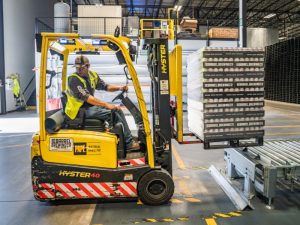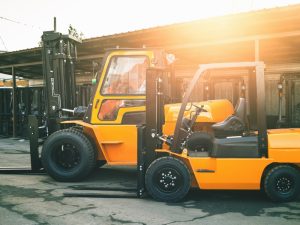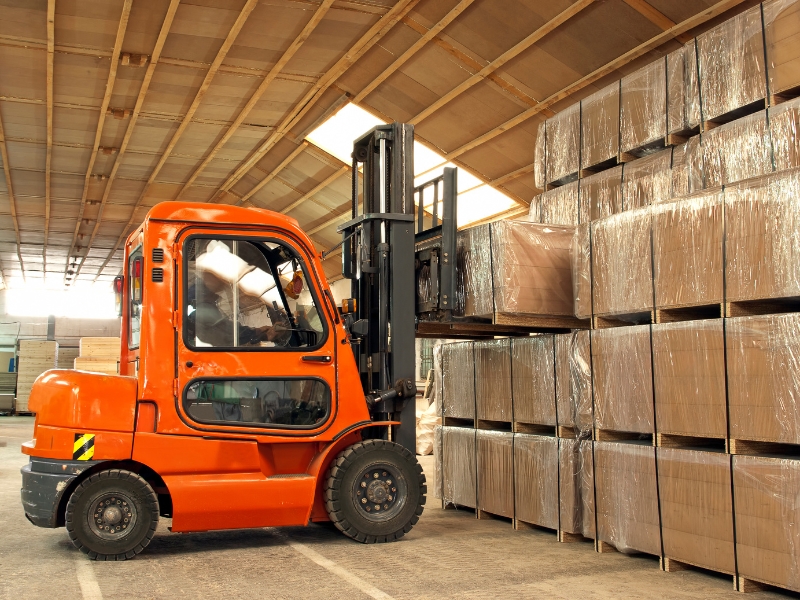Operating a forklift in Australia comes with a set of rules and regulations designed to ensure safety in the workplace. One key aspect of forklift operation is understanding weight limits. In this article, we will explore the importance of these weight limits, how to ensure your forklift complies, and why it is essential to stay within these limits. Whether you’re a business owner or an individual seeking a forklift licence, it’s crucial to grasp these concepts to maintain a safe and efficient workplace.
What are the weight limits for forklifts in Australia that you should be aware of?
In Australia, forklift weight limits are governed by safety regulations and design specifications. These weight limits can vary depending on the model and intended use of the forklift. Below are the key points to consider:
- Load capacity: Forklifts have a specified load capacity, typically measured in tonnes. The load capacity refers to the maximum weight that a forklift can safely lift and carry. It’s crucial to check this before operation.
- Load centre: This refers to the distance from the fork to the load’s centre of gravity. A standard load centre is 600mm, but this can vary depending on the type of forklift.
- Attachment limits: Forklifts are sometimes equipped with attachments, such as clamps or rotators. These attachments can affect the forklift’s weight limit, so you must always consider the additional weight and load.
For example, a standard counterbalance forklift may have a load capacity of up to 5,000 kg, but a rough terrain forklift could support heavier loads, sometimes up to 10,000 kg.
Forklift Type | Maximum Load Capacity | Typical Use |
Counterbalance Forklifts | Up to 5,000 kg | Warehouses, factories |
Reach Trucks | Up to 3,000 kg | Narrow aisles, indoor |
Rough Terrain Forklifts | Up to 10,000 kg | Construction, outdoor |
How can you tell if your forklift is within the legal weight limits?
To ensure your forklift is within legal weight limits, you need to follow these steps:
- Check manufacturer specifications: Every forklift has a plate or label indicating the load capacity. This is the manufacturer’s specified weight limit for safe operation.
- Know the load centre: As mentioned earlier, the load centre impacts the weight capacity. Ensure the load is evenly distributed and does not exceed the rated load centre.
- Understand the type of forklift: The specifications of a forklift vary based on its model and intended use. Always use the correct forklift for the type of load you are moving.
- Periodic inspections: Regular maintenance and checks are crucial. An overloaded forklift can develop issues that affect its lifting capacity, so keeping it in top condition is essential.
To maintain compliance with Australian regulations, operators must also keep records of weight tests and inspections.
Why is it important for you to understand forklift weight limits for workplace safety?
Understanding forklift weight limits is not only crucial for legal compliance but also for preventing workplace accidents. Here’s why it matters:
- Prevents overloading: Forklifts that are overloaded can become unstable, increasing the risk of tipping over. This can result in serious injury or damage to property.

- Ensures efficient operation: By knowing your forklift’s weight limits, you can avoid unnecessary strain on the machine, extending its lifespan and improving overall productivity.
- Reduces risk of injury: Workers in construction and warehouse environments are particularly at risk when forklifts exceed their capacity. Overloading may cause a loss of control, leading to accidents that could injure workers or damage goods.
- Compliance with Workplace Health and Safety Laws: Failure to adhere to weight limits can result in hefty fines and legal issues. In Australia, businesses must comply with Work Health and Safety (WHS) laws to protect employees.
What safety certifications should you have to operate a forklift in Australia?
In Australia, you must have the correct certification to operate a forklift safely and legally. These certifications ensure that operators possess the necessary knowledge and skills to follow safety regulations and maintain safe practices while operating forklifts within weight limits.
- Forklift licence: The most common certification for operating a forklift. Forklift operator training courses provide essential hands-on experience and theoretical knowledge to ensure operators meet the necessary safety standards and legal requirements.
- High-risk work licence: This licence is required for individuals to operate a forklift in workplaces across Australia. It is issued by SafeWork Australia to ensure operators are well-equipped to handle forklifts safely.
Having the appropriate certifications not only ensures compliance with regulations but also helps prevent workplace accidents, promoting a safer environment for everyone.
Can exceeding forklift weight limits cause accidents or injuries that you should avoid?
Yes, exceeding forklift weight limits can significantly increase the likelihood of accidents or injuries. Here’s how:
- Tipping over: Overloading a forklift can cause it to tip over, especially when turning or moving over uneven surfaces. This is a serious hazard and can cause significant injury or even fatalities.
- Damage to equipment: Consistently exceeding the weight limit stresses the forklift’s hydraulics, engine, and tyres. This can result in costly repairs and unplanned downtime.
- Load spillage: When the forklift exceeds its weight limit, the load may become unstable and fall off, potentially injuring workers or damaging products.
- Loss of control: Overloading reduces the forklift’s ability to manoeuvre effectively. This can lead to accidents, such as collisions with other machinery, workers, or walls.
Injuries due to forklifts often result from operators not adhering to safe load capacities. To prevent forklift accidents in the workplace, it’s essential to combine proper training, adherence to safety protocols, and regular maintenance to ensure the safe operation of equipment.
Which forklift is best for handling heavier loads in construction?
When dealing with heavy loads in construction, selecting the right forklift is crucial. Some of the best forklifts for handling heavier loads include:
- Rough terrain forklifts: These are designed for outdoor environments, making them ideal for construction sites. They can handle loads of up to 10,000 kg and are equipped with large tyres to navigate rough terrain.
- Telehandlers: Similar to rough terrain forklifts, telehandlers offer extended reach, making them ideal for lifting heavy materials to elevated areas. They are commonly used on construction sites.
- Counterbalance forklifts: While more commonly used indoors, counterbalance forklifts are also available in higher-weight capacities and can be useful for construction applications in certain situations.

It’s important to consider your specific needs and load type when selecting a forklift for construction. Additionally, understanding the importance of forklift safety training is crucial, as it helps prevent accidents, ensures compliance with legal requirements, and promotes a safer workplace for all employees.
Need forklift training?
At SafeZone Training, we offer comprehensive forklift training courses that provide you with the skills and certification needed to operate a forklift safely. Whether you’re looking to operate forklifts in warehouses or on construction sites, we cover all the safety aspects you need to know. Our courses are designed to meet Australian standards and ensure you understand forklift weight limits, load handling, and compliance with workplace safety regulations.
If you’re ready to take the next step in your forklift training journey, speak to SafeZone Training experts to learn more about our courses.

